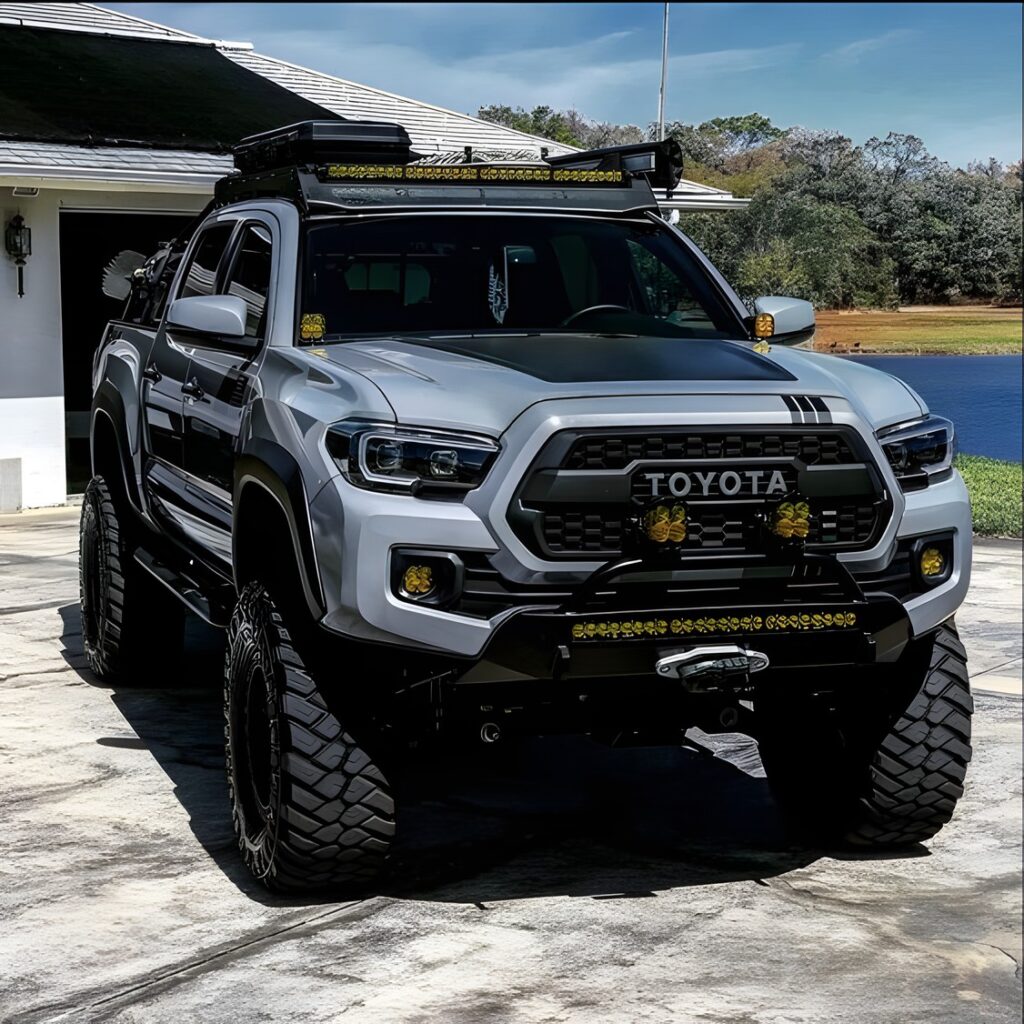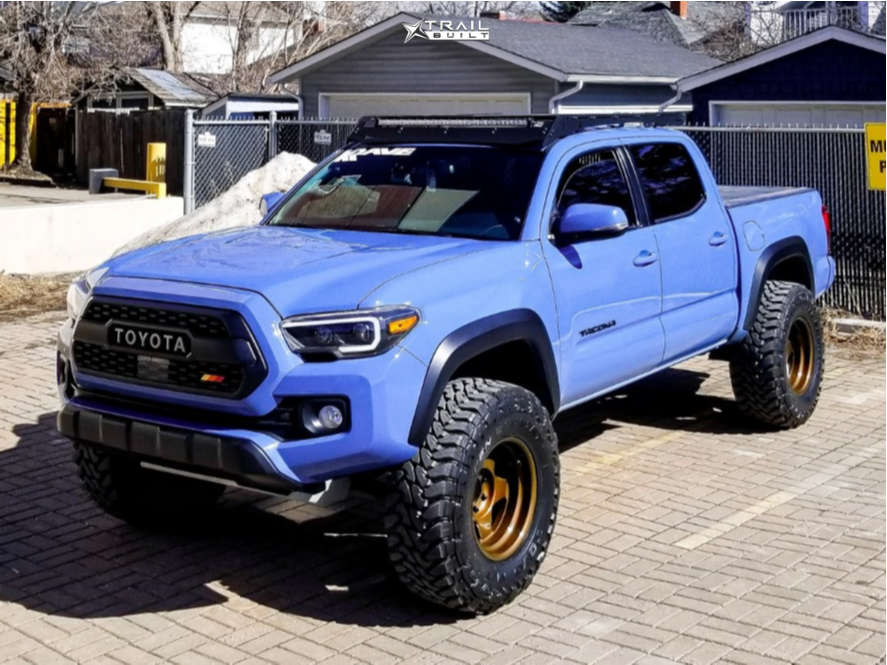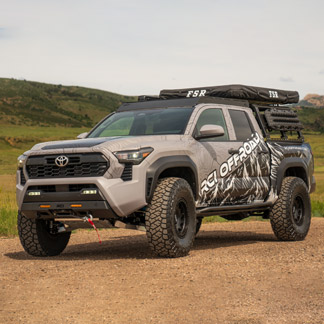Ever been on a trail so rugged you felt like you were auditioning for a survival show? I have, and let me tell you, the Toyota Tacoma I was riding in made me feel like I could conquer anything—mud, rocks, even a rogue squirrel that darted across our path.
I first fell in love with the Tacoma at a friend’s off-road camping trip a few years back. It was a sleek silver beast, lifted high with massive tires, a roof rack loaded with gear, and lights that could probably signal aliens.
I thought, “This truck means business!” The Tacoma has a reputation for being a reliable midsize pickup, but what makes it a true off-road legend are some clever upgrades that don’t always get the spotlight.
So, grab a snack, maybe pretend you’re on a trail with me, and let’s dive into three hidden off-road mods that turned the Tacoma into a trail king—complete with some techy details, a few laughs, and a story or two from my own adventures.
Skid Plates in the Early 2000s—Giving the Tacoma a Bulletproof Belly

First up, let’s talk about skid plates—the unsung heroes of off-roading. Back in the early 2000s, Tacoma owners started realizing that their trucks, while tough, weren’t exactly invincible when it came to rough terrain.
The undercarriage—think engine, transmission, and fuel tank—was like the soft belly of a dragon, just waiting for a sharp rock to ruin your day. Enter skid plates: thick metal shields that bolt onto the underside of the truck to protect those vital parts.
Around 2001, aftermarket companies like ARB and All-Pro Off-Road started offering skid plate kits for the first-gen Tacoma (1995–2004), and they quickly became a must-have for serious off-roaders.
These plates, often made of 1/4-inch steel or aluminum, could take a beating without flinching. They covered everything from the front differential to the transfer case, so you could bash over rocks or scrape along a trail without worrying about a pricey repair bill.
For example, a full skid plate kit for a 2003 Tacoma might weigh around 50 pounds but could save your engine from a rock that would otherwise punch a hole in your oil pan. It was like giving your truck a suit of armor—except this armor let you keep climbing mountains instead of slaying dragons.
The best part? It gave drivers peace of mind to push their Tacomas harder, knowing they wouldn’t end up stranded in the middle of nowhere.
I learned how crucial skid plates are the hard way. A few years ago, I tagged along with my buddy Mike on a trail run in his stock Tacoma. We were having a blast, bouncing over rocks like we were in a monster truck rally, when—thunk!—we hit a jagged boulder.
Mike’s face went white as we heard a grinding noise from underneath. We hopped out, crawled under the truck, and saw a dented transmission pan, leaking fluid like it was crying for help.
Our day ended with a tow truck and some sad sandwiches on the side of the trail. If Mike had skid plates, we might’ve been sipping victory beers at the campsite instead. That mod might not be the flashiest, but it’s a game-changer for any Tacoma looking to dominate the trails.
Adjustable Coil-Over Shocks in the 2010s—Making the Tacoma Dance Over Rocks

Next, let’s talk about a mod that made the Tacoma handle trails like a pro ballerina—adjustable coil-over shocks. Around the 2010s, off-road enthusiasts started swapping out the Tacoma’s stock suspension for these bad boys, especially on the second-gen models (2005–2015). Coil-overs are a type of shock absorber with a spring wrapped around it, and the adjustable part means you can tweak the ride height and stiffness to match the terrain. Think of it like tuning a guitar, except instead of music, you’re tuning your truck to glide over rocks or soak up bumps like they’re nothing.
Brands like Bilstein and Fox started offering coil-over kits for the Tacoma, with models like the Bilstein 6112 allowing you to adjust the height by up to 2.5 inches. This meant you could lift your Tacoma to fit bigger tires—say, 33-inch all-terrains—without messing up the suspension geometry.
More importantly, you could dial in the damping (that’s the bounciness, for us non-engineers) to be soft for a smooth ride on washboard trails or stiff for tackling steep climbs without bottoming out.
For example, a 2012 Tacoma with coil-overs could clear obstacles that would’ve left a stock truck scraping its belly, all while keeping the ride comfortable enough that you wouldn’t spill your coffee on the way to the trail.
I got to experience coil-overs firsthand when my friend Jenna let me tag along in her 2014 Tacoma on a desert run. She’d just installed a set of Fox coil-overs, and I swear, that truck floated over the bumps like it was on a magic carpet.
We hit a rocky section that looked like a giant had dropped a pile of boulders, and I braced myself for a teeth-rattling ride. But nope—Jenna’s Tacoma just danced over the rocks, barely jostling us.
I turned to her and said, “This thing rides better than my couch!” She laughed and said, “Wait ‘til you see it climb!” Sure enough, we tackled a steep incline later, and the coil-overs kept the truck planted like it was glued to the ground.
I’m not saying I’d take up off-roading full-time—I’m more of a “let’s not get stuck” kind of guy—but those coil-overs made me a believer. They turned the Tacoma into a trail legend by giving it the flexibility to handle anything nature threw its way.
Custom Roof Racks with Integrated Lighting—Seeing the Trail, Day or Night
Finally, let’s shine a light—literally—on custom roof racks with integrated lighting. This mod started gaining traction in the late 2010s, especially with the third-gen Tacoma (2016–present).
Off-roaders wanted a way to carry gear like tents, kayaks, or recovery boards without sacrificing visibility on night runs, so they started mounting roof racks with LED light bars.
These setups are like putting a spotlight on your Tacoma, turning pitch-black trails into something you can actually navigate without squinting or, you know, driving into a tree.
Companies like Prinsu and Baja Designs began offering roof racks with built-in mounts for LED lights, often 40- or 50-inch bars that could pump out 20,000 lumens or more. That’s bright enough to light up a football field—or at least the gnarly trail you’re trying to conquer at 2 a.m.
The racks themselves were usually made of aluminum, lightweight but strong enough to hold 500 pounds of gear, and the lights could be angled to spot obstacles far ahead or to the sides.
For a 2018 Tacoma, adding a roof rack with lights meant you could extend your adventures into the night, whether you were camping in the wilderness or just trying to find your way back to civilization after a long day of wheeling.
I saw one of these setups in action at a night run last year, and I was blown away. My friend Carlos had a Tacoma with a Prinsu rack and a massive LED light bar that made the trail look like it was high noon.
We were deep in the woods, the kind of dark where you can’t see your hand in front of your face, and Carlos flipped on the lights—boom, it was like the sun decided to make a surprise appearance.
I jokingly asked if he ever used it to signal UFOs, and he laughed, saying, “Only on weekends!” But seriously, that light bar saved us when we hit a tricky section with loose rocks and a steep drop-off.
We could see every detail, which meant we didn’t end up as a cautionary tale on the evening news. Maybe I’m a bit of a scaredy-cat when it comes to night runs, but that roof rack and lighting combo made the Tacoma a beast that could tackle trails any time of day—or night.
Wrapping Up—Your Tacoma’s Ready to Rule the Trails!

So, there you have it—three hidden upgrades that turned the Toyota Tacoma into an off-road legend that can take on any trail with confidence.
Skid plates gave it the armor to survive rough terrain, adjustable coil-overs made it handle like a dream, and custom roof racks with lights let it shine bright on night adventures.
Each of these mods shows how a little ingenuity can transform a Tacoma into something unstoppable, whether you’re crawling over rocks or camping under the stars.
If you’re itching to hit the trails, I’d say start with one of these upgrades and see where it takes you. Maybe join a local off-road group or check out some Tacoma builds online for inspiration—I know I’m already dreaming of my own lifted Tacoma with all the bells and whistles.
I’ll leave you with a quote from off-road racer Rod Hall: “The only way to get better is to get out there and drive.” So go on, get your Tacoma dirty, and make some trail memories of your own!
